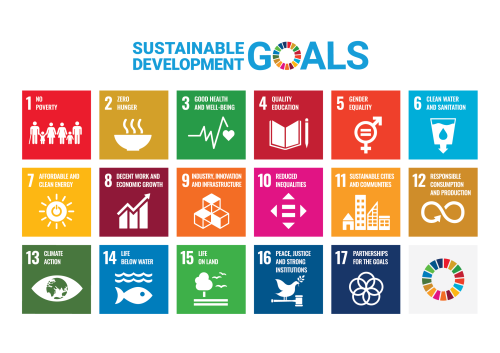Bioenergy and the SDGs
What are the Sustainable Development Goals?
To which SDGs can the energetic use of biogenic residual and waste materials contribute (examples)?
Here you find guidelines for using SDG-Logos:
Sustainable Development Goals - Guidelines for the use of the SDG logo including the color wheel, and 17 icons
Die 17 Sustainable Development Goals. © United Nations
In the basic part of OpenGeoEdu you already had the opportunity to work with the Sustainable Development Goals of the United Nations - SDGs for short. You learned that there are more than 200 indicators that serve to measure the status quo of the 17 goals or the 169 sub-goals and to track their development.
Answer eight questions about the SDGs to find out how well you know the Sustainable Development Goals!
If we look at the 17 targets focusing on bioenergy from residual and waste materials, target number 7 ("affordable & clean energy") stands out at first glance.
As explained in the previous chapters, the sustainable production of electricity, heat or fuel from biomass can contribute to a renewable energy system. However, bioenergy from residual and waste materials also has a direct or indirect impact on many other SDGs.
The following two examples show how biomass from residual and waste materials in West Africa and Germany can contribute to achieving the SDGs.
